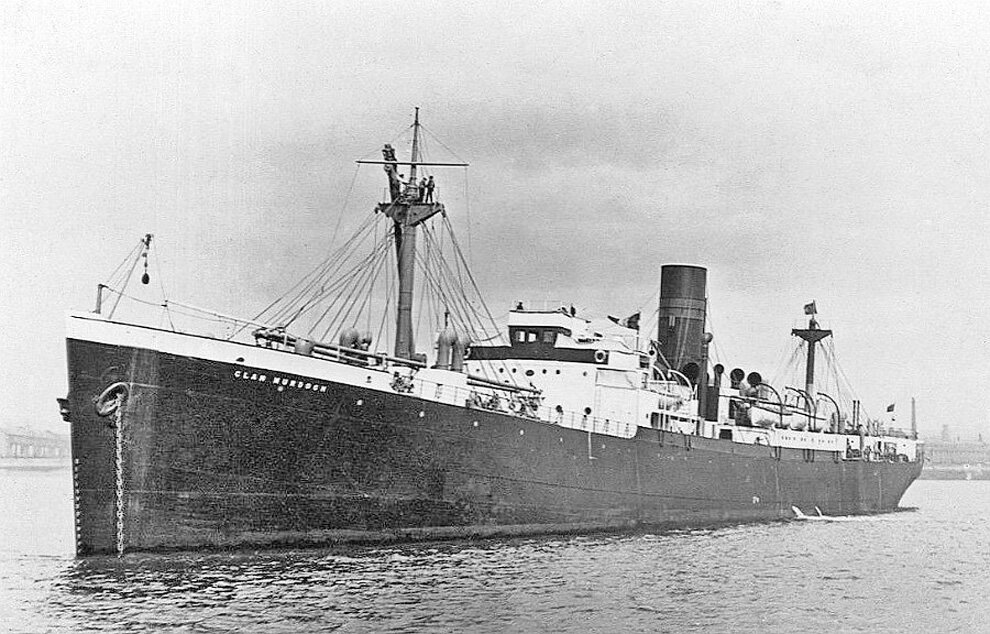Captain L.W. Gibbins
captain lawrance Wilfred gibbins, merchant navy
War service, 1939-45
This display shows the Second World War campaign medals of my grandfather, Captain Lawrance Wilfred Gibbins (1908-86), a British Merchant Navy officer who began his career as a Royal Naval Reserve cadet in the School Ship HMS Conway in 1923 and ended it after ten years as a captain of large cargo ships, retiring in 1963. He was at sea almost continuously from the first day to the last day of the war, serving in six ships as Second Officer and then Chief Officer, logging 188,910 miles in 59 convoys and many independent voyages in the Atlantic, Mediterranean and Indian Oceans.
The medals are, left to right, the 1939-45 Star (awarded for a minimum of six months at sea in hostile waters), the Atlantic Star (for a further six months, in the Atlantic), the Burma Star (for operations in the Bay of Bengal after the Japanese war had begun, providing that the 1939-45 Star had been earned), the Italy Star (for participation in assault landings in the Mediterranean in 1943-4, providing that the 1939-45 Star had been earned), and the War Medal (for 28 days at sea). The two photos were taken early in the war when he was Second Officer of Clan Murdoch. The first shows him walking away from a meeting with the Clan Line port agent in South Africa carrying a sack full of money and with a revolver in his jacket pocket. The second shows him, second left, with his gun crew (he was the ship’s Gunnery Officer). With this crew and 12-pounder gun he fired at aircraft that machine-gunned Clan Murdoch in the North Sea in 1941, as described in one of the blogs below.
He worked throughout his career for the Clan Line, the largest pre-war British cargo company to carry goods from India and Africa. During the war the company operated under the aegis of the Ministry of War Transport, bringing foodstuffs, raw materials, munitions and other goods to Britain. In addition to their own ships, the merchant companies managed ships that had been purpose-built for the transport of troops and equipment for assault landings, under the aegis of an organisation known as ‘Combined Operations.’ In one of these ships, M.V. Empire Elaine, a specialised assault ship designed to carry large landing craft, he took part in the 1943 Sicily landings, the 1944 South of France landings and operations in the Bay of Bengal to supply landing craft for the war against the Japanese in Burma.
He was in many convoys that were attacked by U-boats, aircraft and surface raiders. In 1941 his ship Clan Murdoch was damaged by air attack in the North Sea. Several convoys he was in lost numbers of ships to U-boat or air attack, including SL-36 (June-July 1940), in which four ships were torpedoed in the first ‘wolf pack’ attack, and KMS-18B (June-July 1943), the assault convoy for Sicily in which three ships carrying Canadian troops were sunk. He told me that his worst convoy experience was in December 1941 in HX-162, the only UK-bound convoy from Halifax in Nova Scotia to be dispersed and turned back through force of weather. By the end of the war the Clan Line had lost 37 of the 55 ships it managed and at least 674 officers and ratings. Including Lascars - the Indian ratings employed by the Clan Line and other East Indies shipping lines - the total losses among British merchant vessels during the war were more than 30,000 men killed and 2,400 ships sunk.
The banner image is of the assault ship M.V. Empire Elaine begin repainted and refitted on the Clyde in early 1943 in preparation for Operation Husky, the Sicily landings (National Maritime Museum Collections). My grandfather was Second Officer of this ship from 1942 to 1944.
Blogs
The following blogs describe in detail events from his war service, including photographs, images from his personal logs and official documentation of sailings and convoys (some of it top secret until very recently).







